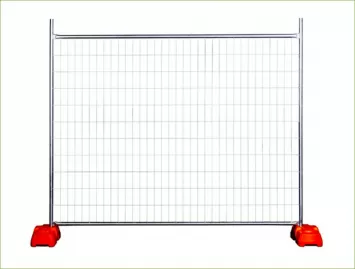How do you Stabilize a Temporary Fence?
When it comes to temporary fencing, stability is a crucial factor that cannot be overlooked. Whether you're setting up a fence for a construction site, a special event, or any other temporary need, ensuring its stability is essential for safety and functionality. Here's a step-by-step guide on how to stabilize a temporary fence.

1. Assess the Ground Conditions
Before installing a temporary fence, it's important to assess the ground conditions. Look for uneven surfaces, soft soil, or slopes that could affect the fence's stability. If necessary, consider preparing the ground by leveling it, compacting the soil, or using a foundation base to provide a more stable foundation.
2. Use Quality Posts and Connectors
The posts and connectors used to build the fence play a vital role in its stability. Ensure you're using quality materials that are designed specifically for temporary fencing. Look for posts made of sturdy materials like steel or aluminum, and connectors that are easy to assemble yet provide a secure connection.
3. Secure the Posts Properly
The posts should be driven into the ground firmly to provide a stable base for the fence. Use a post driver or hammer to drive the posts into the soil, ensuring they're at least a few feet deep. If the ground conditions are poor, consider using concrete or other fillers to provide additional stability.
4. Add Weight or Bracing
Adding weight or bracing to the fence can help enhance its stability. You can use sandbags, concrete blocks, or other heavy objects to weigh down the fence panels. Additionally, you can install braces or guy wires to reinforce the fence and keep it from swaying or toppling over.
5. Regularly Inspect and Maintain
Once the fence is installed, it's important to regularly inspect and maintain it to ensure its stability. Look for any loose or damaged parts and replace them immediately. Check the posts and connectors for any signs of wear or corrosion and address any issues promptly. By maintaining the fence in good condition, you can ensure it remains stable and secure throughout its intended use.
In conclusion, stabilizing a temporary fence involves assessing the ground conditions, using quality materials, properly securing the posts, adding weight or bracing, and regularly inspecting and maintaining the fence. By following these steps, you can ensure your temporary fence remains stable and secure, providing a safe and functional perimeter for your needs.
307
0
0


Comments
All Comments (0)